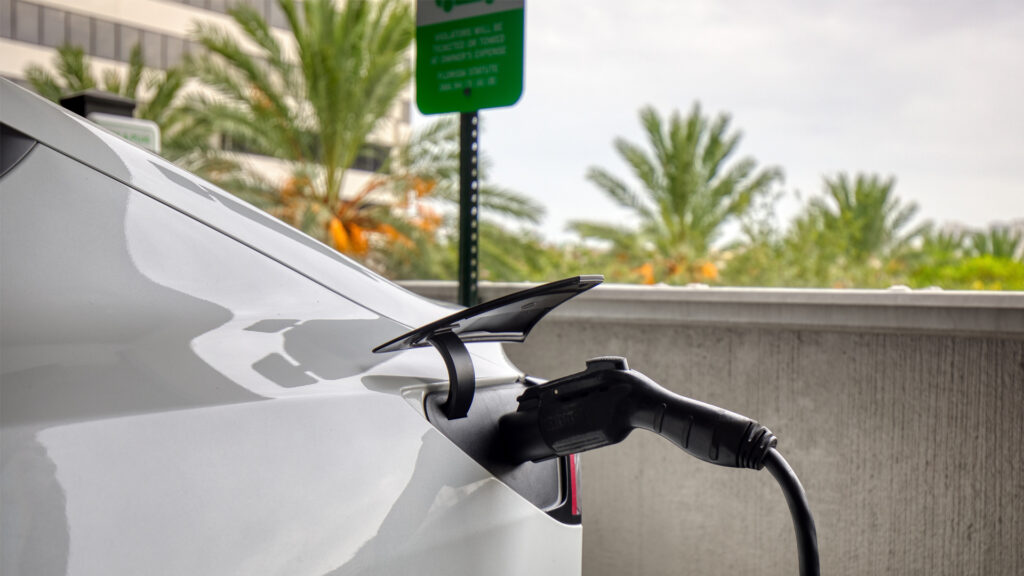By Mia McCormick, Environment Florida, and Evan Jones, Environment America
According to Renewables on the Rise 2024, the eighth edition of Environment America’s annual report on the state of clean energy in America, Florida now generates 4,832% more solar power than it did in 2014.
This increase means that Florida can power an additional 1,616,810 households each year with clean energy.
Here are five interesting facts about clean energy’s growth in Florida:
1. Florida generated more solar energy in 2023 alone than all solar generation before 2020 combined: Florida produced 17,808 GWh of solar energy last year, up from 361 GWh in 2014. This was enough to bring us to 3rd place in the national solar rankings.
2. Florida had no reported battery storage capacity until 2018, now we’re 4th in the country: As of 2023, Florida has installed 0.56 gigawatts of battery storage capacity. This ranks Florida 4th in the country.

3. There are now 231,518 all-electric vehicles registered in Florida: The number of EVs has grown 5,086% since 2014. Florida is ranked 2nd in the country in terms of EV growth in the past 10 years.
4. Florida added 1,945 EV charging ports in 2023: This was a roughly 25% increase from 2022 and a 649% increase from 2014. Florida now ranks 3rd in the country in EV charging ports installed.
5. Florida has significantly increased energy efficiency since 2014: Incremental lifetime energy savings from utility run energy efficiency programs have increased from 2,245 GWh in 2014 to 3,028 GWh in 2022. This increase of over 34% helps Florida continue to limit its energy impact.
Our clean energy growth over the past 10 years has proven the viability and significance of these renewable energy sources. By taking advantage of the opportunities to continue these trends, Florida can accelerate the transition away from fossil fuels.
What can state and local leaders do to keep renewable energy growing?
State and local governments can support renewable energy by:
- Setting renewable energy goals with clear benchmarks
- Leveraging federal resources to reach renewable energy goals.
- Ensuring that utility policies fairly compensate the owners of renewable energy technologies
- Supporting policies for permitting and interconnection that make adopting renewable energy technologies easier
- Expanding efficiency programs, including updating energy codes for buildings and adopting the latest appliance efficiency standards
Mia McCormick is an advocate with Environment Florida, a policy and action group with one mission: to build a healthier, greener Sunshine State. Evan Jones works as a campaign associate and organizer on Environment America’s clean energy campaigns.
Banner photo: A solar farm in Florida (ASCOM Prefeitura de Votuporanga, CC BY 2.0, via Wikimedia Commons). This piece was originally published at https://environmentamerica.org/florida/articles/5-surprising-facts-about-renewable-energy-growth-in-florida/.
If you are interested in submitting an opinion piece to The Invading Sea, email Editor Nathan Crabbe at nc*****@*au.edu. Sign up for The Invading Sea newsletter by visiting here.



